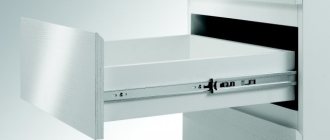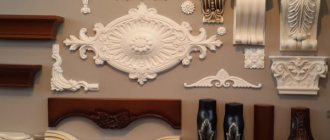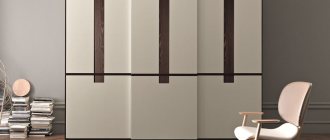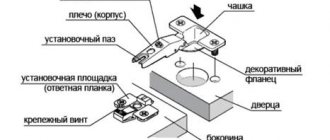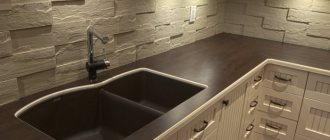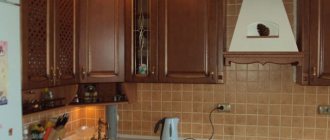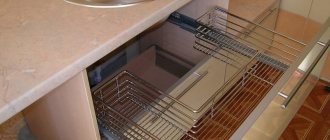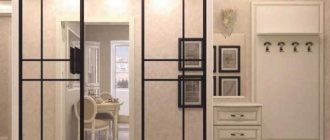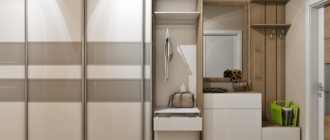What is
At first glance, Schlegel looks like an ordinary narrow tape with an adhesive layer. However, if you have experience in assembling cabinet furniture, namely sliding wardrobes, then it is not difficult to determine the purpose of the Schlegel. The part is used to ensure silent closing of the doors of sliding systems.
If manufacturers did not equip the doors with a schlegel, a characteristic bang would be heard at the end of the system closing. The characteristic sound would not only disturb the peace of the household at any time of the day, but would negatively affect the inside of the cabinet product. Without a seal, the sliding system quickly fails, leaving snags, dents and other defects on the pillar bars.
To understand what Schlegel is, it is necessary to consider its characteristics:
- appearance - a narrow tape, 12 or 6 mm wide, according to its intended purpose, having an adhesive layer on one side. The other side of the schlegel is equipped with a special brush, which ensures smooth closing of the sash;
- other names - manufacturers call Schlegel differently: fleecy tape, buffer tape, boot, seal, shock absorber. If in a showroom a buyer is asked about equipping a cabinet with these devices, the consultants mean Schlegel;
- location - the Schlegel is installed on the internal groove of the aluminum profile, the handle of which is used to extend the system.
The manufacturer can install the device directly at the factory. This is also done by the wardrobe assembler after finishing the work.
How to glue a Schlegel on a compartment door?
Gluing the brush seal is done after installing the door in the grooves of the guides and making all adjustments. The Schlegel is glued into the groove provided for it on the profile. The anti-adhesive base is removed from the edge of the seal. The sticky edge of the schlegel is pressed against the edge of the door end and, gradually removing the protective base, it is glued along the entire height.
During the operation of the door, the edge of the seal may come off and become loose, which causes inconvenience and spoils the appearance. A special clothespin is used to firmly secure the edge of the schlegel.
Varieties
In a wide variety of components for sliding wardrobes, the use of this part is necessary. It performs irreplaceable functions for the proper operation of the system. Today there are several types of devices.
| Name | Pile height | Base type | Possible colors |
| Brush seal on pile | 6 mm | Self-adhesive base, 7 mm wide | White, milky, beige, bronze, black |
| Schlegel on pile | 12 mm | Self-adhesive base, 6 mm wide | Grey, bronze, white, beige |
| Brush seal on felt | 9-15 mm | Without adhesive base, 5 mm wide | GREY-black |
| Schlegel on double pile | 4 mm | Self-adhesive base, 11 mm wide | Black, beige, brown |
The table shows approximate colors; depending on the choice of the manufacturer, they may be supplemented with other shades. Seals are sold in rolls, and consumers receive them in the quantity necessary to cover a cabinet door. Regarding the cost of the device, it is important to note: the higher the layer of pile and bristles, the more expensive the schlegel will cost.
To tape a sliding wardrobe yourself using tape, first degrease the surface of the profile.
Felt
Vorsyanoy
Self-adhesive
Application of Schlegel for sliding wardrobes
The door seal is not as simple as it seems. In the professional world, this type of fittings is divided according to a number of parameters, but before moving on to the intricacies of choice and purpose, let's look at the definition.
What is a furniture door seal?
Schlegel is a narrow fleecy strip that is glued to the side vertical profiles of sliding wardrobe doors.
This strip has a dual purpose: firstly, it softens the impact of the side vertical profile on an adjacent surface (cabinet wall or adjacent door), and secondly, it blocks the movement of house dust both from the cabinet and into the cabinet.
What other names does Schlegel have?
Craftsmen call such fittings differently; the most common names include the following:
- Boot - these tapes have a pile length from 7 mm to 15 mm, as the name implies, the main purpose is protection from dust;
- Seal – the length of the pile of the seals does not exceed 6 mm. At the dawn of mass production of sliding wardrobes, there were attempts to attach soft rubber, foam rubber and silicone stickers to the end of the doors, but practice has shown that in operation the pile is an order of magnitude ahead of its competitors;
- The shock-proof brush, buffer strip and shock-absorbing strip are, in fact, speech analogues of the above-mentioned sealing tape.
The most popular are schlegels with a width of 7 mm.
- Noise protection - the smooth movement of the door leaf along the guides indicates the quality of the roller system, but the door itself is heavy and even with a slight push it hits the side obstacle hard. Without schlegels, the “music” of opening doors will be heard by all the neighbors in the area, not to mention the household;
- Shockproof protection - sliding wardrobes are assembled from laminated chipboard, MDF, veneered furniture board and natural wood. None of these materials are considered shockproof. And if we also take into account that the blows of the door profile will be applied constantly and at one point, then without compaction within six months the side wall will lose all attractiveness;
Glass and mirror doors have become popular lately. Acrylic glass is not afraid of impacts, but ordinary quartz glass can crack if hit hard. In addition, shockproof tempered glass has critical points at the ends and a light blow to such a point leads to multi-link destruction of the glass sheet.
- Dust protection - at least 70% of sliding wardrobes are used for storing clothes, bed linen and other similar things. Simply put, any clothes closet is a large dust collector. House dust is one of the ten allergens dangerous to humans, and any protection against it will not be superfluous.
What materials are door shock absorbers made of?
The first models of shock-absorbing gaskets for doors were made of felt; the material is good, but short-lived. Now the share of felt models has decreased to 15–20%. The main market is occupied by synthetic polypropylene tapes with different densities.
Polypropylene tapes are considered the highest quality.
Varieties of Schlegels
When choosing a shock-absorbing tape, you should pay attention to several product parameters.
| Illustrations | Recommendations |
| Brush buffer . The tape is 7 mm wide with a pile height of 6 mm. Serves to soften the blow. Produced on a self-adhesive basis. | |
Anther.
| |
| Wide ribbons . They differ from the compacting buffer in the width of the base and the height of the pile. Here the width of the tape starts from 11 mm, while the pile in such tapes does not exceed 4 mm. They are intended only for impact protection. |
The durability, price and performance characteristics of the tapes depend on the level of pile density. According to the technology, the pile is applied in lines, respectively, the more lines, the denser the tape. There are 3 varieties here:
- Medium density has 3 lines and 3P markings;
- Standard – 4 lines, 4P marking;
- Extra or super thick tape - 5 lines, marked 5P.
Functions
The widespread use of Schlegel for sliding wardrobes in the furniture industry is no coincidence: the part carries an important functional load in the operation of furniture. The fluffy tape glued to the aluminum profile ensures reliable operation of sliding systems. In particular, Schlegel performs the following functions:
- depreciation when opening and closing the doors. In the absence of this device, the door will constantly hit the counter bar from the inside. Over time, this will cause significant defects in the form of chips and cracks in the chipboard. Schlegel copes with the task perfectly, ensuring smooth closing of the compartment doors;
- protection from dust - if the door does not close tightly, then gaps appear at the joints of furniture panels. Dust and dirt accumulated in the apartment easily penetrate through them. The constant accumulation of dust leads not only to contamination of things, but to the fact that household members develop allergies. Sealing tape will easily help hide the gap and prevent dust from getting inside;
- noise reduction - this function is important if there are small children in the house. Often, a mother needs to open the closet in order to get clothes while the baby is sleeping. Cushioning will help prevent the characteristic knock and prevent noise and popping.
In high-quality furniture, a special groove is cut out on the aluminum profile into which the buffer tape must be glued. Standard manufacturers do not prepare such conditions for installation; the tape must be glued directly to the profile.
Schlegel can be attached with glue
Cut off the excess
How to install a Schlegel in a wardrobe door
First, let's figure out which tape should be glued and where. There is nothing complicated here; tapes with long pile are used in sliding systems with 3 or more sections. Anthers are attached to the edges of the central section to block the movement of dust between the two guides, as in the diagram below.
Installation diagram for schlegels with long and short pile.
Self-adhesive tape is glued in 3 stages:
- Degrease the side profile with any alcohol-containing solution. If there is glue left there from the old Schlegel, then clean everything clean;
- Remove a small part of the protective tape and apply it to the top of the profile;
- At the same time, fix the tape with one hand so that it fits neatly into the groove, and with the other pull off the protective tape. At the bottom, cut the tape to size.
It is advisable to remove the protective tape as the seal is glued.
There are profiles where the Schlegel is additionally fixed with clips. In this case, after gluing, fastening clips are installed.
Using the tips described above, you can easily decide which tape to buy and how to install it. The video in this article shows a basic repair of a peeling tape. If you have any questions, write in the comments, I will try to help.
Clips at the edges of the profile are not attached to all profile models.
What materials is it made from?
Today, brush seals are produced in several colors that are as close as possible to the shades of the aluminum profile of sliding wardrobes:
- golden;
- silver;
- bronze;
- brown
The material from which the miracle brush is made is called polypropylene. An adhesive layer is applied to it and the consumer only needs to peel off the protective paper and evenly distribute the tape along the desired perimeter of the sash. To do this more accurately and evenly, it is recommended not to peel off the entire paper layer at once, but to evenly separate it as you stick the brush.
Felt or bristles are used for bristles. The second option is considered optimal, as it is produced in several sizes and will have an excellent noise barrier. Felt tape is also good, but the thickness of the brush does not allow you to close the door securely, so it can be used for small gaps.
It is necessary to select the color of the Schlegel for the coupe according to the color scheme of the furniture and the shade of the profile - this way the materials will look more harmonious.
How to install it yourself
The design of the strip brushes allows them to be installed horizontally, vertically or at different angles. It is important to choose the right Schlegel. The brush seal must be as compatible as possible with the door structure; the height of the pile must correspond to the width of the gap.
In sliding systems with a large number of sections, it is worth using buffer tapes with long pile. They will reliably protect against dust getting into the closet. The seal is glued to the back side of the vertical profile. Anthers are attached along the edges of the central section between two guides.
The self-adhesive base is installed in 3 stages. First, the side profile is degreased with an alcohol-containing solution. If there is glue left from the old Schlegel, then it is necessary to clean the surface more thoroughly.
When gluing, you only need to separate the protective tape and evenly place the schlegel around the entire perimeter of the sash. To make the tape easier to fit into the groove when gluing, fix it with one hand, and remove the paper layer with the other.
At the bottom, the seal is cut to the length of the door.
In profiles where the Schlegel is additionally fixed, fastening clips are installed.
You can fix the seal using regular superglue.
Watch a video on how to glue Schlegel to the door surface of a sliding wardrobe.
How to choose a brush seal (schlegel) for a wardrobe
The brush-shaped Schlegel seal is a recommended accessory for every wardrobe. The brush seal is attached to the end of the compartment door. Functions as a dust cover - the pile prevents dust from penetrating into the cabinet through the working gaps. Softens the closure of the cabinet door, acting as a gasket between the profile and the body of the cabinet, thereby saving parts from wear.
